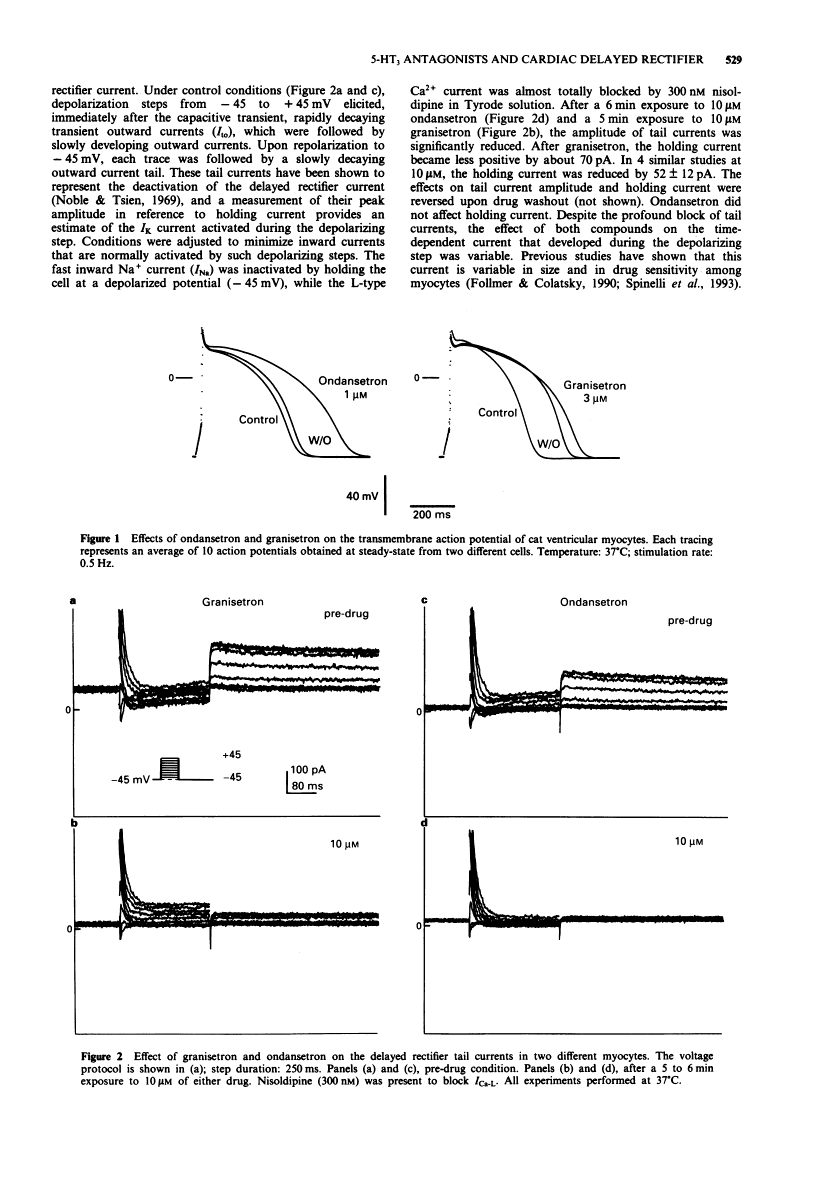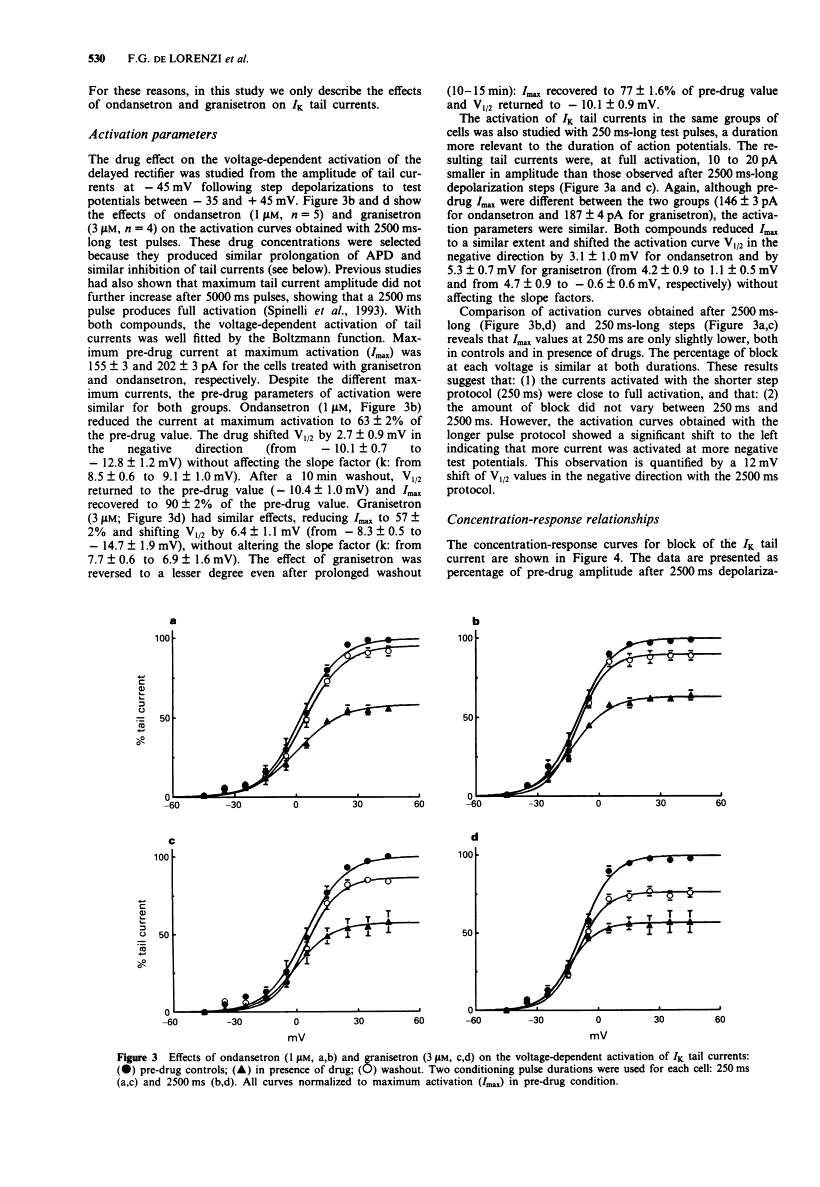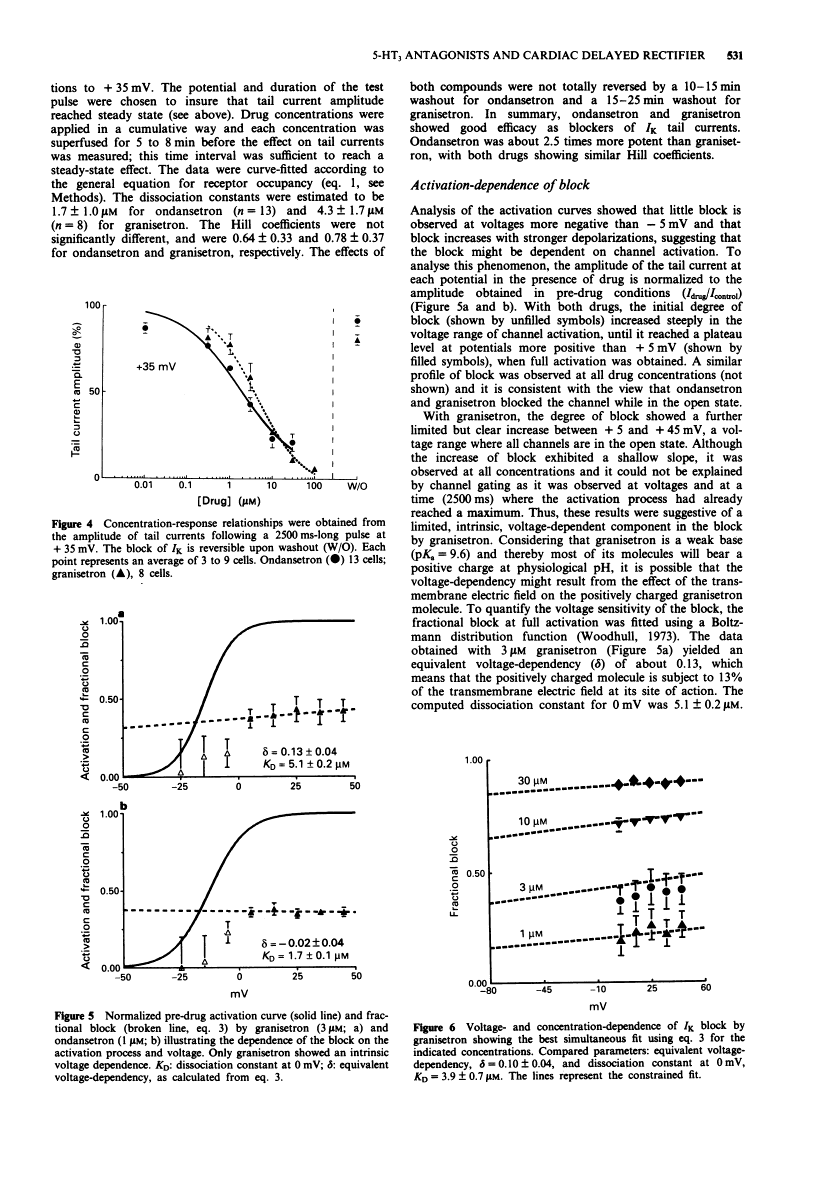
| Size | Price | Stock | Qty |
|---|---|---|---|
| 100mg |
|
||
| 250mg |
|
||
| 500mg |
|
||
| 1g |
|
||
| 2g |
|
||
| 5g |
|
||
| Other Sizes |
|
Purity: ≥98%
Granisetron HCl (BRL-43694; BRL43694; BRL-43694A; trade name: Kytril), an approved antiemetic drug, is a potent serotonin 5-HT3 receptor antagonist with antiemetic activity. It is used to treat nausea and vomiting brought on by chemotherapy. Granisetron, with a KD of 4.3 mM, inhibits the delayed rectifier current (IK) of isolated feline ventricular myocytes. Granisetron exhibits an inherent voltage dependence as depolarization causes the block to increase. Granisetron blocks are deposited at a binding site 10% across the transmembrane electrical field from the intracellular side. In feline isolated ventricular myocytes, granisetron (3 mM) prolongs the action potential duration (APD) by approximately 30% at 0.5 Hz.
| Targets |
5-HT3 Receptor ( IC50 = 17 μM )
|
||
|---|---|---|---|
| ln Vitro |
|
||
| ln Vivo |
|
||
| Enzyme Assay |
The activity of BRL 43694 (granisetron) was investigated using established models of 5-HT3 receptor activity. In guinea-pig isolated ileum, BRL 43694 antagonised the contractions evoked by relatively high concentrations of 5-HT (pA2 = 8.1 +/- 0.2). However, except in high concentrations, BRL 43694 did not affect the contractions of similar preparations of ileum, evoked by electrical field stimulation (cholinergically mediated), the nicotinic agonist dimethylphenyl piperazinium (DMPP) or by cholecystokinin octapeptide. Similarly, BRL 43694 did not affect electrically evoked, cholinergically mediated contractions of rat or human isolated stomach. In other models of 5-HT3 receptor activity (rabbit isolated heart, Bezold-Jarisch reflex in anaesthetised rats), potent antagonism by BRL 43694 was demonstrated. In radioligand binding studies on rat brain membranes, BRL 43694 had little or no affinity for 5-HT1A, 5-HT1B, 5-HT2 or for many other binding sites. BRL 43694 may therefore be a potent and selective 5-HT3 receptor antagonist[Eur J Pharmacol. 1989 Jan 10;159(2):113-24.].
|
||
| Cell Assay |
In rat forestomach GR reduced 5-HT-evoked contractions at IC50 17 /- 6 uM. GR 0.003-0.03 nM dose-dependently decreased s-HT tachycardia in the isolated rabbit heart; at high concentrations, GR decreased both submaximal and maximal responses to 5-HT.
1. In this study, researchers investigated the effects of two 5-HT3 antagonists, ondansetron and granisetron, on the action potential duration (APD) and the delayed rectifier current (IK) of feline isolated ventricular myocytes. Whole-cell current and action potential recordings were performed at 37 degrees C with the patch clamp technique. 2. Ondansetron and granisetron blocked IK with a KD of 1.7 +/- 1.0 and 4.3 +/- 1.7 microM, respectively. At a higher concentration (30 microM), both drugs blocked the inward rectifier (IKl). 3. The block of IK was dependent on channel activation. Both drugs slowed the decay of IK tail currents and produced a crossover with the pre-drug current trace. These results are consistent with block and unblock from the open state of the channel. 4. Granisetron showed an intrinsic voltage-dependence as the block increased with depolarization. The equivalent voltage-dependency of block (delta) was 0.10 +/- 0.04, suggesting that granisetron blocks from the intracellular side at a binding site located 10% across the transmembrane electrical field. 5. Ondansetron (1 microM) and granisetron (3 microM) prolonged APD by about 30% at 0.5 Hz. The prolongation of APD by ondansetron was abolished at faster frequencies (3 Hz) showing reverse rate dependence. 6. In conclusion, the 5-HT3 antagonists, ondansetron and granisetron, are open state blockers of the ventricular delayed rectifier and show a clear class III action. |
||
| Animal Protocol |
|
||
| ADME/Pharmacokinetics |
Absorption, Distribution and Excretion
Absorption Absorption of is rapid and complete, though oral bioavailability is reduced to about 60% as a result of first pass metabolism. Route of Elimination The remainder of the dose is excreted as metabolites, 48% in the urine and 38% in the feces. Clearance 0.52 L/h/kg [Cancer Patients with 1 mg bid for 7 days] 0.41 L/h/kg [Healthy subject with a single 1 mg dose] Metabolism / Metabolites Primarily hepatic; undergoes N -demethylation and aromatic ring oxidation followed by conjugation. Animal studies suggest that some of the metabolites may have 5-HT 3 receptor antagonist activity. Granisetron has known human metabolites that include 9'-Desmethylgranisetron and 7-Hydroxygranisetron. Biological Half-Life 4-6 hours in healthy patients, 9-12 hours in cancer patients |
||
| Toxicity/Toxicokinetics |
Effects During Pregnancy and Lactation
◉ Summary of Use during Lactation No information is available on the use of granisetron during breastfeeding. Until more data become available, granisetron should be used with caution during breastfeeding. An alternate drug may be preferred. ◉ Effects in Breastfed Infants Relevant published information was not found as of the revision date. ◉ Effects on Lactation and Breastmilk A woman nursing an 8-month-old infant 6 to 8 times daily was admitted to the hospital for an appendectomy. During the procedure she received granisetron, cefazolin, ketorolac, rocuronium, succinylcholine, and sufentanil. The patient also received 2 boluses of intravenous propofol of 150 mg followed shortly thereafter by a 50 mg dose. Postoperatively, she was receiving acetaminophen, cefazolin, ibuprofen, and pantoprazole, as well as oxycodone and dimenhydrinate as needed. Twenty-two hours after the procedure, the mother extracted milk for the first time and noted it to be light green in color. Analysis of the green milk using a nonvalidated assay detected no propofol. The green color faded and was absent by postoperative day 4 when she resumed breastfeeding. The authors judged that the green color was possibly caused by propofol or one of its metabolites. |
||
| References | |||
| Additional Infomation |
Granisetron hydrochloride is an aromatic amide and a member of indazoles.
A serotonin receptor (5HT-3 selective) antagonist that has been used as an antiemetic for cancer chemotherapy patients. See also: Granisetron Hydrochloride (annotation moved to). Drug Indication Prevention of nausea and vomiting in patients receiving moderately or highly emetogenic chemotherapy, with or without cisplatin, for up to five consecutive days. Sancuso may be used in patients receiving their first chemotherapy regimen or in patients who have previously received chemotherapy. |
| Molecular Formula |
C18H25CLN4O
|
|---|---|
| Molecular Weight |
348.87
|
| Exact Mass |
348.171
|
| Elemental Analysis |
C, 61.97; H, 7.22; Cl, 10.16; N, 16.06; O, 4.59
|
| CAS # |
107007-99-8
|
| Related CAS # |
Granisetron; 109889-09-0; 107007-99-8 (HCl)
|
| PubChem CID |
6918003
|
| Appearance |
White solid powder
|
| Density |
1.33g/cm3
|
| Boiling Point |
532ºC at 760mmHg
|
| Melting Point |
290-292°C
|
| Flash Point |
275.6ºC
|
| Vapour Pressure |
0mmHg at 25°C
|
| Index of Refraction |
1.69
|
| LogP |
3.449
|
| Hydrogen Bond Donor Count |
2
|
| Hydrogen Bond Acceptor Count |
3
|
| Rotatable Bond Count |
2
|
| Heavy Atom Count |
24
|
| Complexity |
442
|
| Defined Atom Stereocenter Count |
2
|
| SMILES |
Cl[H].O=C(C1C2=C([H])C([H])=C([H])C([H])=C2N(C([H])([H])[H])N=1)N([H])C1([H])C([H])([H])[C@@]2([H])C([H])([H])C([H])([H])C([H])([H])[C@@]([H])(C1([H])[H])N2C([H])([H])[H]
|
| InChi Key |
QYZRTBKYBJRGJB-UHFFFAOYSA-N
|
| InChi Code |
InChI=1S/C18H24N4O.ClH/c1-21-13-6-5-7-14(21)11-12(10-13)19-18(23)17-15-8-3-4-9-16(15)22(2)20-17;/h3-4,8-9,12-14H,5-7,10-11H2,1-2H3,(H,19,23);1H
|
| Chemical Name |
1-methyl-N-(9-methyl-9-azabicyclo[3.3.1]nonan-3-yl)indazole-3-carboxamide;hydrochloride
|
| Synonyms |
BRL43694; BRL 43694; BRL43694A; BRL 43694A; BRL-43694; BRL-43694A; Granisetron Hydrochloride; Granisetron hydrocholride,(S); 1-methyl-N-((1R,3r,5S)-9-methyl-9-azabicyclo[3.3.1]nonan-3-yl)-1H-indazole-3-carboxamide hydrochloride; Granisetron HCl; GRAN; US trade name: Kytril
|
| HS Tariff Code |
2934.99.9001
|
| Storage |
Powder -20°C 3 years 4°C 2 years In solvent -80°C 6 months -20°C 1 month Note: Please store this product in a sealed and protected environment, avoid exposure to moisture. |
| Shipping Condition |
Room temperature (This product is stable at ambient temperature for a few days during ordinary shipping and time spent in Customs)
|
| Solubility (In Vitro) |
|
|||
|---|---|---|---|---|
| Solubility (In Vivo) |
Solubility in Formulation 1: ≥ 0.77 mg/mL (2.21 mM) (saturation unknown) in 10% DMSO + 40% PEG300 + 5% Tween80 + 45% Saline (add these co-solvents sequentially from left to right, and one by one), clear solution.
For example, if 1 mL of working solution is to be prepared, you can add 100 μL of 7.7 mg/mL clear DMSO stock solution to 400 μL PEG300 and mix evenly; then add 50 μL Tween-80 to the above solution and mix evenly; then add 450 μL normal saline to adjust the volume to 1 mL. Preparation of saline: Dissolve 0.9 g of sodium chloride in 100 mL ddH₂ O to obtain a clear solution. Solubility in Formulation 2: ≥ 0.77 mg/mL (2.21 mM) (saturation unknown) in 10% DMSO + 90% Corn Oil (add these co-solvents sequentially from left to right, and one by one), clear solution. For example, if 1 mL of working solution is to be prepared, you can add 100 μL of 7.7 mg/mL clear DMSO stock solution to 900 μL of corn oil and mix evenly. View More
Solubility in Formulation 3: 100 mg/mL (286.64 mM) in PBS (add these co-solvents sequentially from left to right, and one by one), clear solution; with ultrasonication. |
| Preparing Stock Solutions | 1 mg | 5 mg | 10 mg | |
| 1 mM | 2.8664 mL | 14.3320 mL | 28.6640 mL | |
| 5 mM | 0.5733 mL | 2.8664 mL | 5.7328 mL | |
| 10 mM | 0.2866 mL | 1.4332 mL | 2.8664 mL |
*Note: Please select an appropriate solvent for the preparation of stock solution based on your experiment needs. For most products, DMSO can be used for preparing stock solutions (e.g. 5 mM, 10 mM, or 20 mM concentration); some products with high aqueous solubility may be dissolved in water directly. Solubility information is available at the above Solubility Data section. Once the stock solution is prepared, aliquot it to routine usage volumes and store at -20°C or -80°C. Avoid repeated freeze and thaw cycles.
Calculation results
Working concentration: mg/mL;
Method for preparing DMSO stock solution: mg drug pre-dissolved in μL DMSO (stock solution concentration mg/mL). Please contact us first if the concentration exceeds the DMSO solubility of the batch of drug.
Method for preparing in vivo formulation::Take μL DMSO stock solution, next add μL PEG300, mix and clarify, next addμL Tween 80, mix and clarify, next add μL ddH2O,mix and clarify.
(1) Please be sure that the solution is clear before the addition of next solvent. Dissolution methods like vortex, ultrasound or warming and heat may be used to aid dissolving.
(2) Be sure to add the solvent(s) in order.
| NCT Number | Recruitment | interventions | Conditions | Sponsor/Collaborators | Start Date | Phases |
| NCT05325190 | Recruiting | Drug: Granisetron Transdermal Patch System |
Chemotherapy-induced Nausea and Vomiting |
Tianjin Medical University Cancer Institute and Hospital |
October 10, 2021 | Phase 2 |
| NCT04472143 | Recruiting | Drug: Granisetron Transdermal Other: 0.9% normal saline |
Granisetron | Assiut University | April 2022 | Phase 2 Phase 3 |
| NCT05314257 | Recruiting | Drug: Granisetron Hydrochloride Behavioral: Resistance training |
Histamine | University Ghent | September 1, 2023 | Not Applicable |
| NCT03817970 | Recruiting | Drug: Granisetron Drug: Ondansetron Drug: Palonosetron |
Nephrotoxicity | University of Colorado, Denver | November 15, 2019 | Phase 3 |
| NCT00873197 | Completed | Drug: granisetron | Healthy | Prostrakan Pharmaceuticals | April 2009 | Phase 1 |
 |
|---|
 |
 |